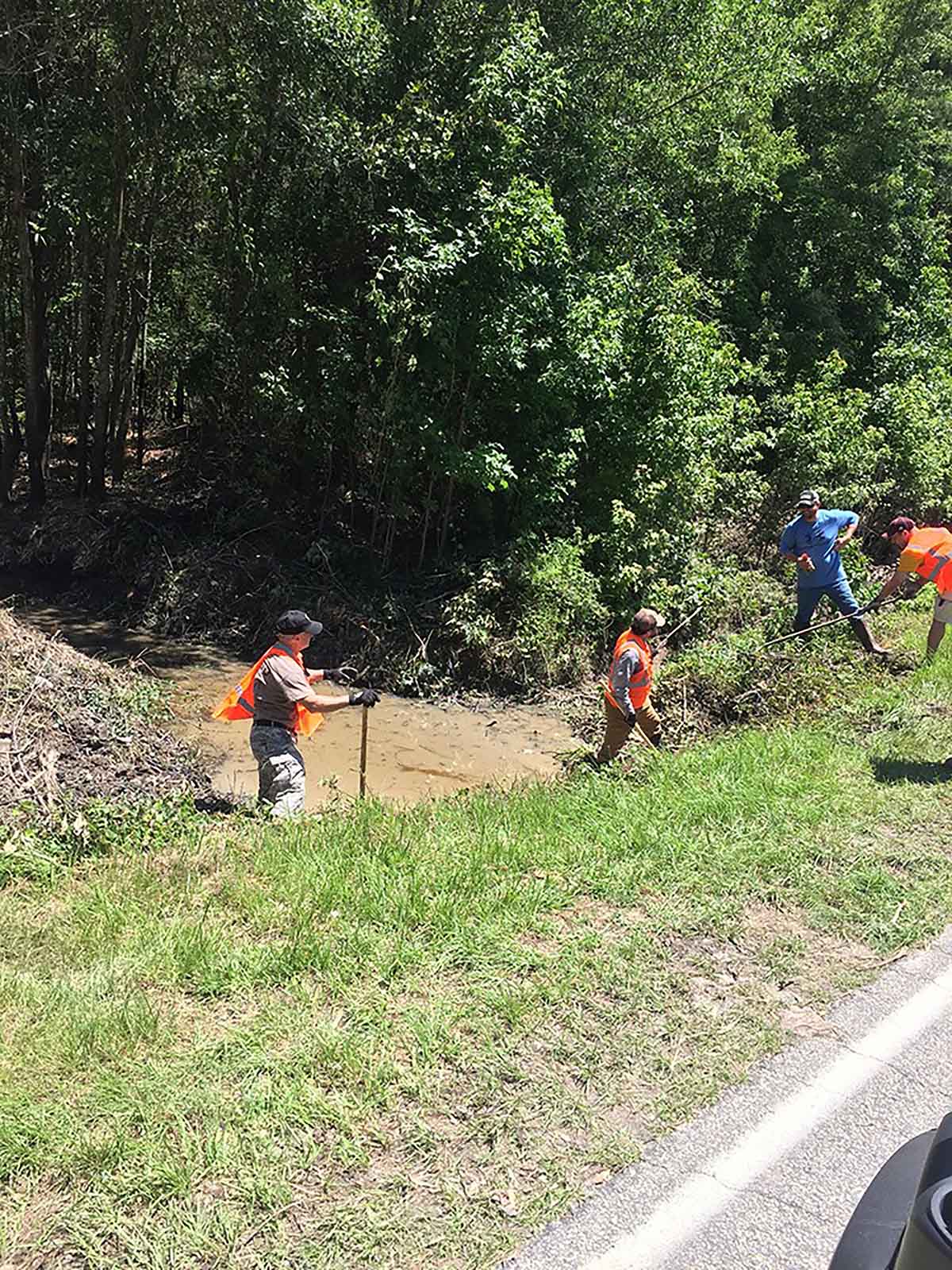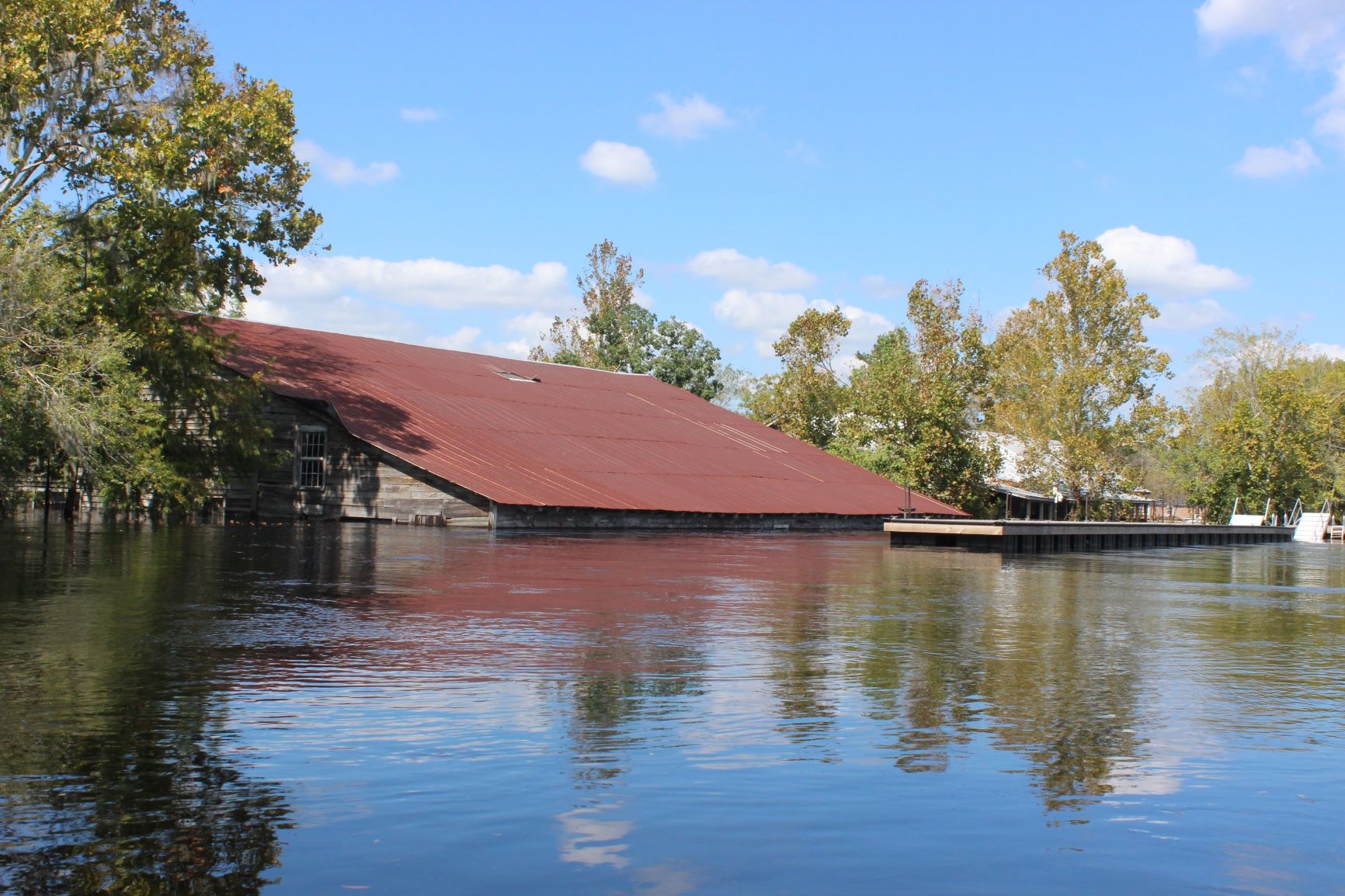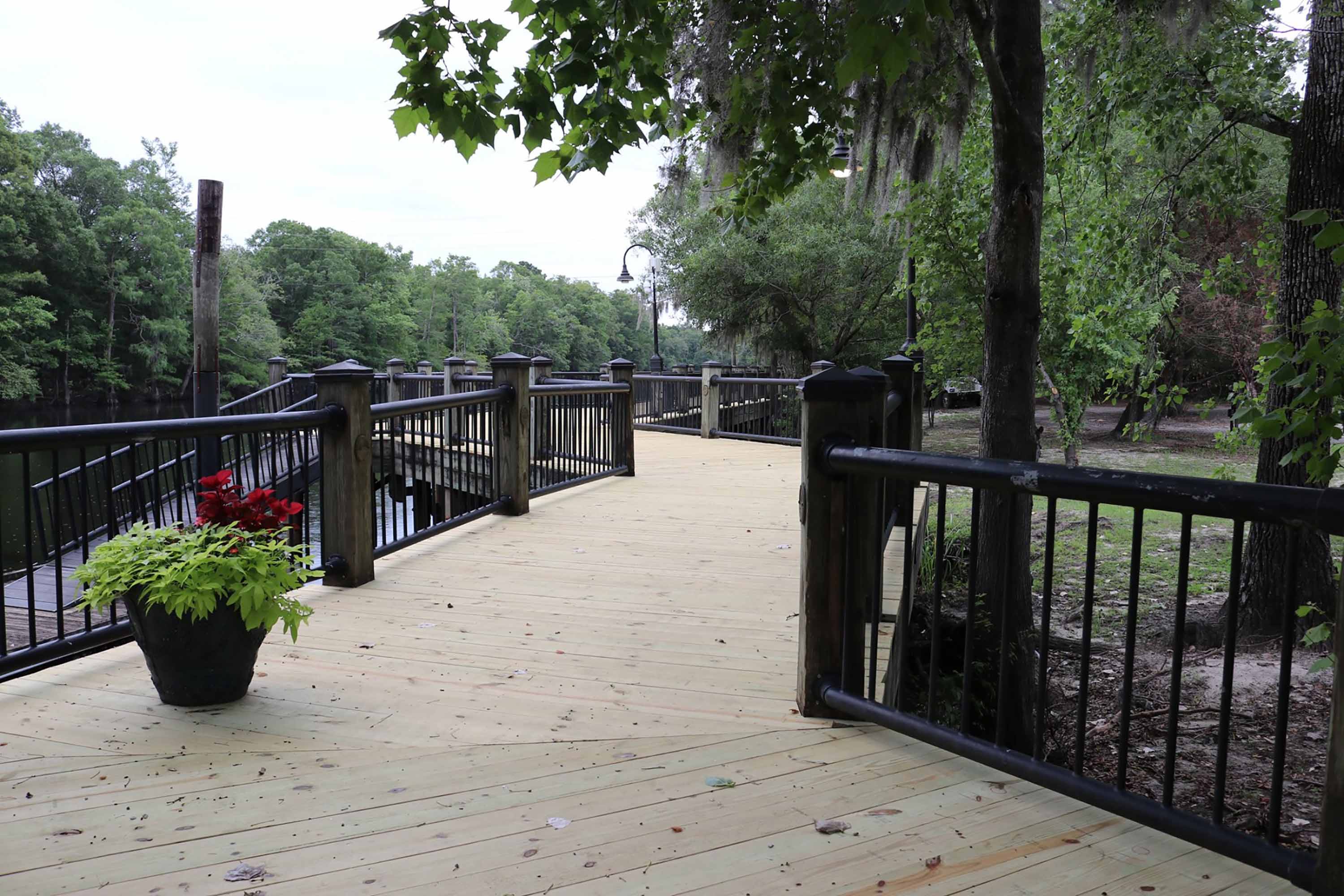Cities Address Long-Term Impacts of Hurricanes
Nichols Town Administrator Sandee Rogers now keeps snake boots, and even waders, ready to go in her car.
This wasn't always the case, but the repeated, devastating flooding the town has experienced — first from Hurricane Matthew in 2016, then Hurricane Florence in 2018 — has spurred significant changes in her daily life. Rogers' job often takes her outdoors to wherever the town is working on drainage systems.

Volunteers cleaned drainage infrastructure in Nichols in June. Photo: Town of Nichols.
The town, located near the confluence of the Little Pee Dee and Lumber rivers, experienced a failure of drainage systems after these storms, contributing to the floods. The major floods — two in three years — devastated homes, businesses and residents' lives in Nichols. Thanks to cleanup assistance that has come in from multiple corners of the state, Nichols is becoming more resilient.
Cleanup help has come from the state — from Gov. Henry McMaster, from the SC Department of Transportation and the SC Floodwater Commission, which staged quarterly meetings in Nichols. A cleanup day earlier this year brought together more than 300 volunteers. Rogers said the town has been grateful for the help, and it also assembled enough funding for a trackhoe for an employee of the street department to operate.
"Within three weeks, he had cleaned over 6,000 linear feet of ditching, and cleaned it to the point of having the sides clear so that the bush hog and the sidearm could get in there and get it maintained. Doing a beautiful job," Rogers said.
Today, the town has a new three-bay fire station to replace the one it lost in Matthew. It's applied for grants for home elevation and demolition of damaged housing, and it has even worked with Clemson University for a study on natural resources and redevelopment.
Small towns, Rogers said, can be incredibly tenacious.
"The small town does not have a lot of backing, it doesn't have deep pockets, it doesn't have a lot of investors who are wanting to jump in," she said. "So you have to work hard, you have to look for what's out there, and boy, have we had a crash course in that. But, through the small town, you can make these things work. It can happen, it's just not going to happen overnight."
In the City of Conway last October, the Waccamaw River swelled to flood stage for weeks after Hurricane Florence dumped a tremendous volume of rain upstream. Some irretrievably damaged waterfront structures, like the Fireman's Clubhouse, were demolished. Even so, the city has been on a path to rebuild and improve others, like the ruined Riverfront Tennis Center. The United States Tennis Association provided a design grant for the city, and it's looking to both elevate the facility and add another clay court to the new version to help with tournaments, City Administrator Adam Emrick said.

The Conway Riverwalk most recently flooded after Hurricane Florence. Photo: City of Conway.

After Hurricane Florence, the Conway Riverwalk had its decking replaced. Photo: City of Conway.
The city also replaced the deck for the Conway Riverwalk using copper-treated lumber, with many of its departments contributing to the reconstruction. The old deck was showing signs of distress and creating trip hazards after multiple inundations from the 2015 flood onward. The new deck is designed to be replaced more easily.
"Just about everybody who could be mobilized to assist was mobilized, and we nailed it. The rebuild looks better than it did originally," Emrick said.
The city is also replacing flooded playgrounds at Riverfront Park and Sherwood Park. To put the riverfront in a better position to recover from floods, Emrick said the city requires new playground equipment be more flood-resistant, with a number of removable hollow plastic parts that can be removed ahead of storms. The new park electrical systems are also intended for disconnection when needed.
"The key takeaway that we've tried to express to our residents is that we need to expect a flood every year, and not do things the way we always have," Emrick said. "Prepare for the worst, and be ready to accept it, because we've had the worst three years out of four."
Conway city staff are also replanting destroyed landscaping at the waterfront. An Arbor Day Foundation grant has allowed for the planting of weeping willows to draw up as much water as possible, and for tree giveaways during Conway Strong Day. In celebration of the city's resilience, this year's Conway Strong Day will commemorate the one-year anniversary of the end of a four-week period of flood status.
In the Town of Cheraw, the difficulty Hurricane Florence brought was the flooding of the Cheraw Community Center, a vital facility that's home to recreation programming, weddings and family reunions. After storm drains reached their capacity, about a foot of water flooded into the building.
In describing the water creeping up and into the center that night, Town Administrator Mike Smith noted that while he had seen many storms before, "Hurricane Florence was the worst. I'll take wind anytime over water."
In the time since, the town has refurbished much of the facility including fixtures, walls and the destroyed wooden gymnasium floor. New flood prevention measures were added such as flood panels that can be rapidly installed in an emergency. In addition, Smith said the town has applied for a Federal Emergency Management Agency grant for a town-wide storm drainage study.
"Tragedies and disasters bring people closer together," Smith said, reflecting on occasions that Cheraw has sent public work crews to help with disaster recovery elsewhere, and times when help has come to Cheraw.
"I can't tell you how proud I am of my fellow municipal brothers and sisters throughout the state who would call and ask if they could do anything," he said. "That touches your heart, knowing that people would do anything to help you."
